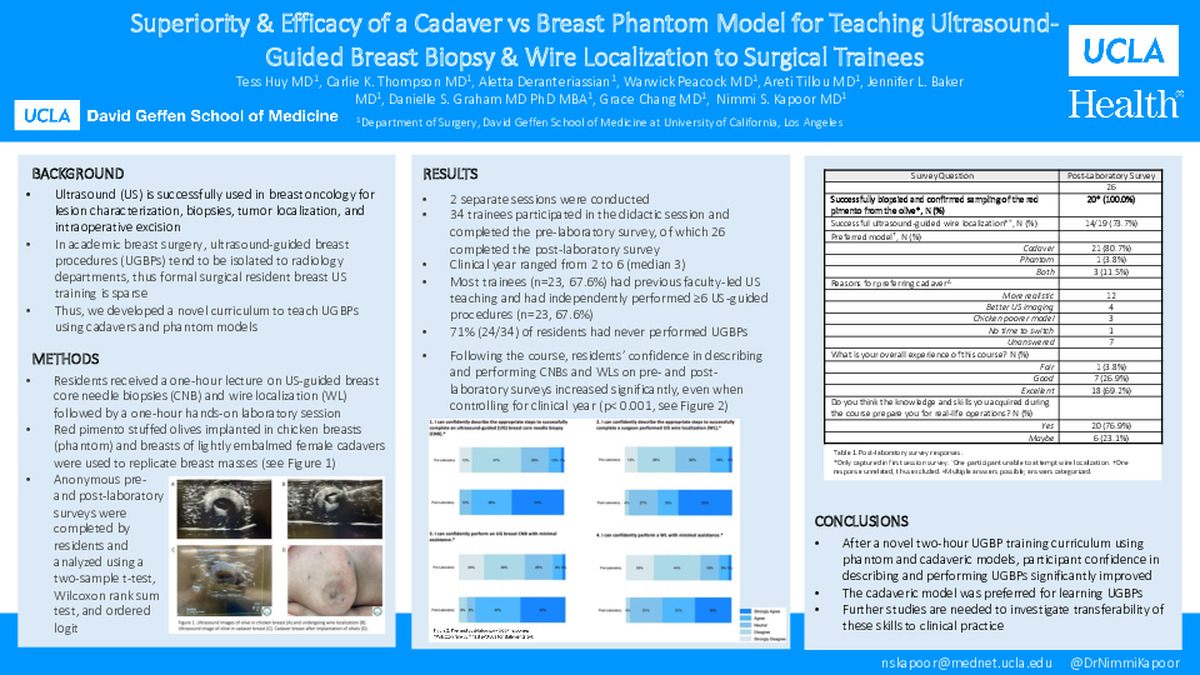
-
Author
Tess Huy -
Poster Title
Superiority & Efficacy of a Cadaver vs Breast Phantom Model for Teaching Ultrasound-Guided Breast Biopsy & Wire Localization to Surgical Trainees
-
Author(s)
Tess C. Huy MD, Carlie K. Thompson MD, Aletta Deranteriassian, Warwick Peacock, MD, Areti Tillou MD, Jennifer L. Baker MD, Danielle S. Graham MD PhD, Grace Chang MD, Nimmi S. Kapoor, MD
-
Contact Author Email
thuy@mednet.ucla.edu
-
Poster Abstract
Background: In academic breast surgery, ultrasound use tends to be limited to radiology departments, thus formal surgical resident training in breast ultrasound is sparse. Building on residents’ ultrasound skills in our general surgery training program, we developed a novel curriculum to teach ultrasound-guided breast procedures (UGBPs), including core needle biopsy (CNB) and wire localization (WL). We hypothesized that learning UGBPs on cadavers would be preferred to learning with a breast phantom model using chicken breasts.
Materials and Methods: Residents received a one-hour lecture on breast CNB and WL followed by a one-hour hands-on laboratory session. Olives stuffed with red pimentos were used to replicate breast masses and implanted in chicken breasts and the breasts of lightly embalmed and umembalmed female cadavers. All residents practiced UGBPs with a course instructor on both models. Residents completed anonymous pre- and post-laboratory surveys utilizing 5-point Likert scales.
Results: A total of 34 trainees participated in the didactics and completed the pre-laboratory survey, of which 26 completed the post-laboratory survey. Participant clinical year ranged from 1 to 6. Residents’ confidence in describing and performing CNBs and WLs increased significantly on post-laboratory surveys, controlling for clinical year (p<0.001). 80.7% preferred learning UGBPs on cadavers over phantoms most commonly citing that the cadaver was more realistic.
Conclusion: Following a novel two-hour UGBP training curriculum using phantom and cadaveric models, resident confidence in describing and performing UGBPs significantly improved. Most favored the cadaveric model and reported that the course prepared them for real-life procedures.
-
Keywords
medical education, teaching methods, simulation, clinical education, curriculum
-
Poster PDF

